Also known as Sol Hoʻopiʻi Years active 1920–1953 Genres World, Country | Occupation(s) Live performer Movies Hawaiian Nights | |
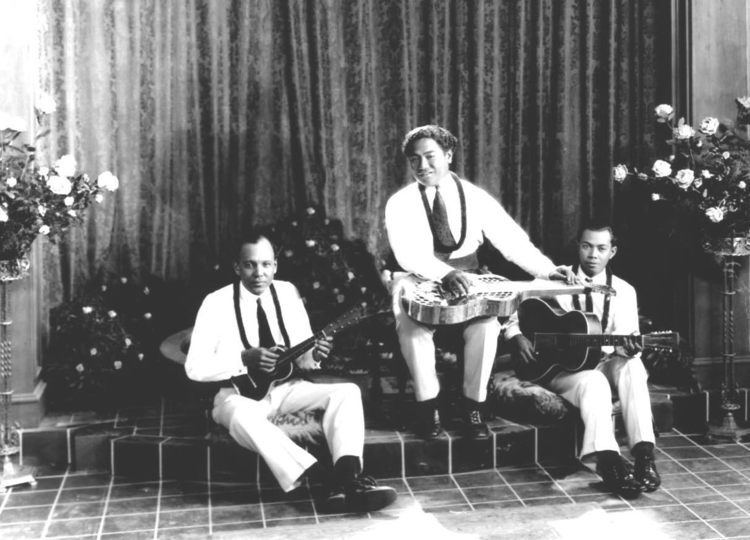 | ||
Birth name Solomon Hoʻopiʻi Kaʻaiʻai Instruments UkuleleGuitarSteel guitar Associated acts Johnny NobleThe Novelty TrioAimee Semple McPherson Albums Master of the Hawaiian Guitar, Volume 1 Record labels | ||
Sol Hoʻopiʻi ([ˌhoʔoˈpiʔi]) (1902–16 November 1953) was born Solomon Hoʻopiʻi Kaʻaiʻai in Honolulu, Hawaii. He was a Native Hawaiian guitarist, claimed by many as the all-time best lap steel guitar virtuoso, and he is one of the most famous original Hawaiian steel guitarists, along with Joseph Kekuku, Frank Ferera, Sam Ku West and "King" Bennie Nawahi.
Contents
- hymn medley george kahumoku dennis kamakahi richard ho opi i bobby black slackkeyshow
- Early life
- Sol Hoopii Trio
- Christian ministry
- Steel guitar invention
- Final days and death
- In popular culture
- Awards
- Soundtracks
- Discography partial
- Filmography
- Songs
- References
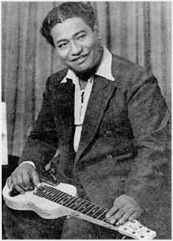
hymn medley george kahumoku dennis kamakahi richard ho opi i bobby black slackkeyshow
Early life
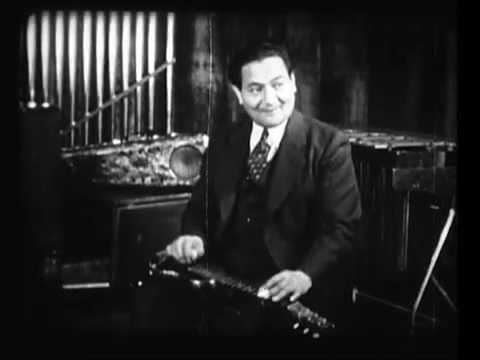
Born Solomon Hoʻopiʻi Kaʻaiʻai, in Honolulu, Hawaii in 1902, into a large family, his birth making him the 21st child in the family.
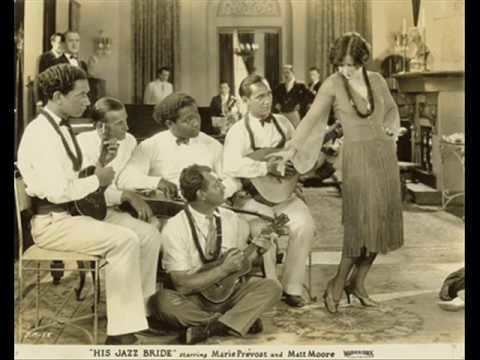
As was the norm in Hawaiian families, Sol's family taught him to sing and play instruments by the time he could walk. He was playing the ukulele by age three. By his teenage years the Hawaiian steel guitar had become his instrument of choice.
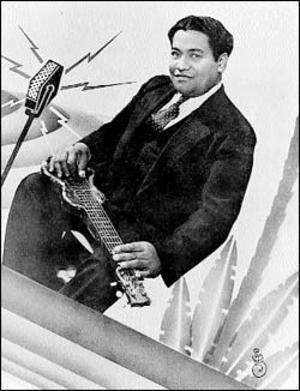
He made his debut with Johnny Noble and his Orchestra. According to the Hawaiian Music Hall of Fame, at age 17 Sol and two teenage friends stowed away on the ocean liner Matsonia. They were discovered by passengers who were so charmed by their musical performances that the other passengers took up a collection to pay their fares. They landed in San Francisco, played a few club engagements, and eventually made their way to Los Angeles. Sol's friends returned to Hawaii, and Sol formed a trio with new associates.
Sol Hoʻopiʻi Trio
By 1924, Hoʻopiʻi had moved to Los Angeles, where he formed the Sol Hoʻopiʻi Trio, with Glenwood Leslie and Lani McIntyre, including sometimes additional musicians, and he successfully performed in the local and then very popular Polynesian-themed night venues. His first recordings in 1925-28 featured often jazzy improvisation.
He recorded his best known material 1933 to 1938, as Sol Hoopii's Novelty Trio, Novelty Quartette and Novelty Five on Decca Records and Brunswick Records labels, like the famous Hula Girl, Ten Tiny Toes, and many more brilliant Hawaiian hula and hapa-haole songs penned by the best Hawaiian composers like Johnny Noble and Sol Bright.
Preferring the acoustic lap steel guitar, he switched to electric lap steel only around 1935 and developed an original tuning, in addition to the open A or open G tunings commonly in use at the time.
He very often applied bluesy and jazzy treatments to the Tin Pan Alley standards, as well as to Hawaiian classics. His peculiar rhythmic, harmonic and melodic techniques influenced not only Hawaiian-styled musicians but also famed country and western swing steel guitarists, like Joaquin Murphy and Jerry Byrd.
Christian ministry
In 1938, Hoʻopiʻi gave up his secular career to join the evangelist Aimee Semple McPherson, writing and performing songs for her tours. A rare video exists of Hoʻopiʻi playing traditional hymns on his lap steel guitar, accompanied by Christian composer Phillip Stanley Kerr on the piano.
Kerr interestingly mis-pronounces Sol's name as "hope-y". (Note: prior to, and for years after, Hawaii's attaining statehood, many mainlanders mis-pronounced the state's name as How-Wah-Yah, leading to show biz jokes about the 50th state of "How Are Ya?" )
Titled Musical Moments with Sol Hoʻopiʻi and His Hawaiian Guitar, part of The Scriptures Visualized series, this was produced in 1942 by C.O. Baptista Films of Chicago. Part 2 of the video begins with Phil Kerr and Sol Hoʻopiʻi testifying about Hoʻopiʻi's Christian conversion, and contains a rare moment of Hoʻopiʻi doing a falsetto rendition of Kerr's composition I'm in Love with the Lover of my Soul.
Steel guitar invention
Philip Kerr mentions in the 1942 Baptista video that Hoʻopiʻi "was the originator of this electric guitar that he's playing." Hoʻopiʻi himself does not make that claim on camera. However, the claim comes up again in 1950, in a Florida Newspaper announcing, "Sol Hoopii, king of the Hawaiian guitar and originator of the electric guitar..." as part of the entertainment line-up for a church anniversary. Most historians credit Joseph Kekuku with inventing the Hawaiian steel guitar about 1889 from an acoustic Spanish guitar. The invention of the electric steel guitar does have some connection to the Sol Hoʻopiʻi Trio in Los Angeles. Musician George Beauchamp hired violin repairman John Dopyera to build an instrument with amplification. Dopyera developed an electric guitar prototype. Beauchamp and Dopyera sought investors for a new company to manufacture and sell the instrument. Towards that end, they took the Sol Hoʻopiʻi Trio to demonstrate the instrument at a party hosted by millionaire Ted Kleinmeyer.
Final days and death
Solomon Hoʻopiʻi Kaʻaiʻai died November 16, 1953. His place of death has been listed alternately as Los Angeles, California or Seattle, Washington.
Bud Tutmarc, a Christian Hawaiian steel guitar player based in Seattle, was a close personal friend of Sol's and stated that Sol died in Seattle. On May 27, 1953, only 6 months before Sol's death, the two friends recorded a live Seattle performance of Indiana March (Sol on steel guitar); a three-in-one gospel medley (Sol and Bud steel guitar duet) - Mansion Over the Hilltop, It Is No Secret and Aloha Oe; a medley of At Calvary and Power In The Blood (Sol solo ukulele instrumental); and I'll Go With Him (ukulele and Sol vocals).
Tutmarc died December 4, 2006, and his web site photo page has a snapshot of Sol and Bud having what looks like a one-on-one jam session. (photo #6 of the "Middle Years" gallery)
Hoʻopiʻi is buried at Forest Lawn Memorial Park (Hollywood Hills). Steel guitarist George de Fretes, who died in 1981, considered Hoʻopiʻi to be his idol, and is buried next to him.
In popular culture
The Sol Hoʻopiʻi Trio appears as a house band wearing "...pink shirts and matching trousers, with red cummerbunds and leis..." in the 1998 novel Damned in Paradise.
Sol Hoʻopiʻi's guitar and memorabilia make an appearance in the 2004 novel The Celestial Jukebox.
Garrison Keillor does a brief tip of the hat to "Sol Hoʻopiʻi and his Royal Hawaiians" in his 2004 novel Love Me.
Author Simon Leng likens George Harrison's slide guitar work with the Traveling Wilburys to "a 1990s Sol Hoʻopiʻi" in his 2006 book on the works of the British legend.
Awards
In 1996, Hoʻopiʻi became an honoree in the Hawaiian Music Hall of Fame.
The Steel Guitar Hall of Fame inducted Hoʻopiʻi in 1979.
In 2012 Hoʻopiʻi's recording of the Gershwin standard "Fascinating Rhythm" was added to the Library of Congress's National Recording Registry list of sound recordings that "are culturally, historically, or aesthetically important, and/or inform or reflect life in the United States."
Soundtracks
Hoʻopiʻi performed in a number of Hollywood "jazz" movies like His Jazz Bride, and later he was involved in the exotic movies craze, appearing notably in Bird of Paradise, Waikiki Wedding, and even some Charlie Chan mystery movies. He also performed in the soundtrack for the Betty Boop cartoon Betty Boop's Bamboo Isle.
Discography (partial)
Filmography
Songs
Hula Girl
Hula Blues
Indiana March
